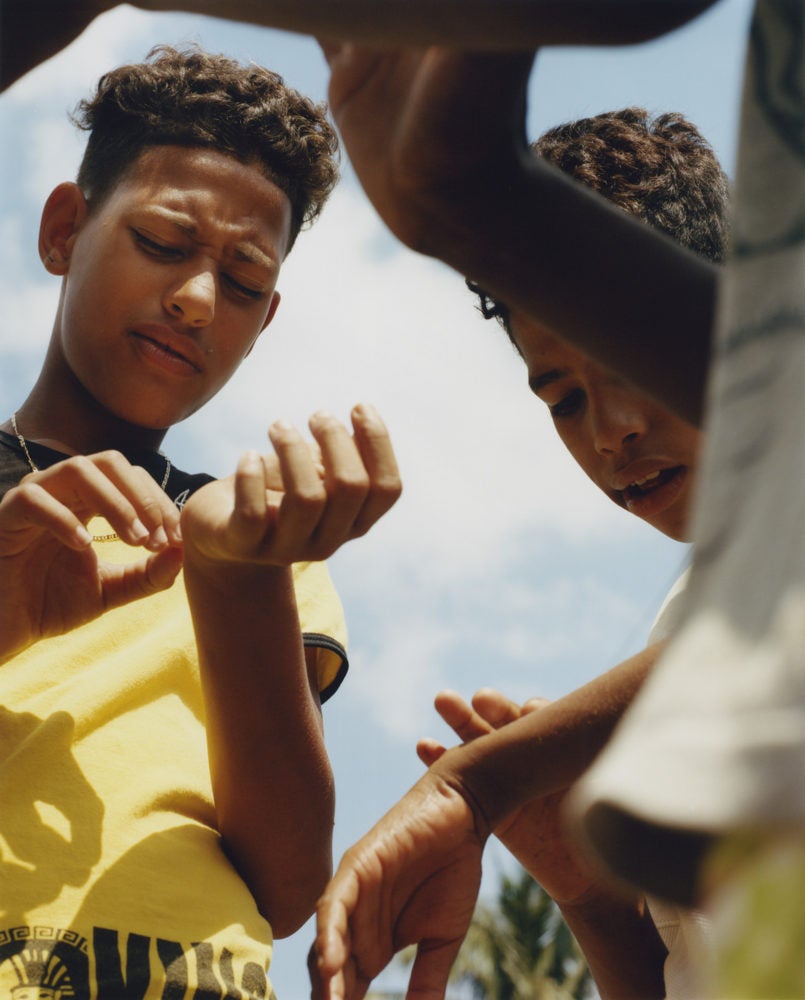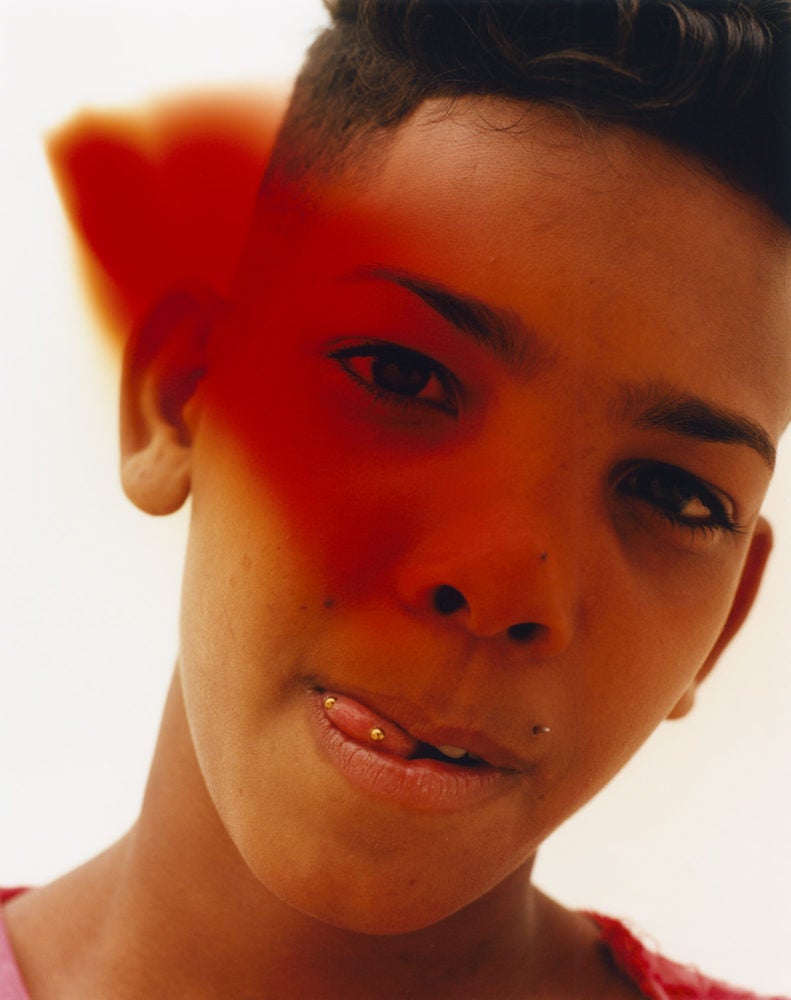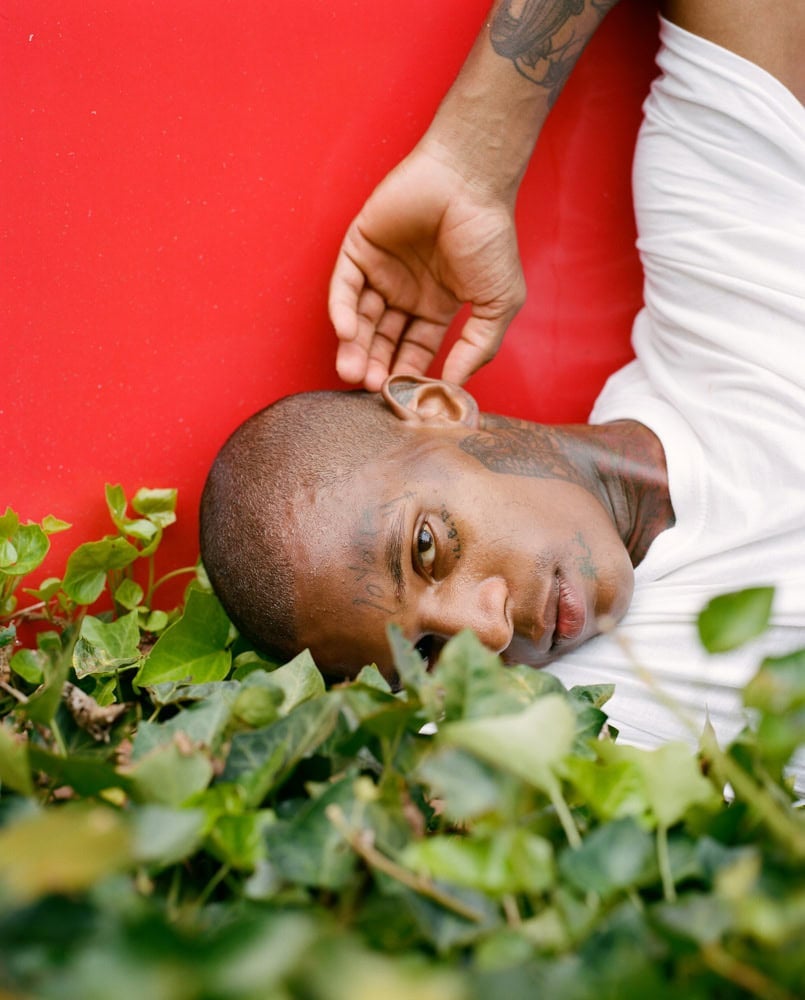
It was no surprise to me when I heard that Tyler Mitchell—the history-making photographer behind Beyonce’s Vogue cover shoot—got his start as a skate kid, taking pictures and videos of kids in his suburban Atlanta scene. The aesthetics of skateboarding have always been dismissed as amateur, dirty, not something serious and deserving of respect, as have Black fashion and aesthetics for all time. Mitchell’s portrait of Beyoncé and his images of suburban skaters both showcase something gentle hidden from unmediated eyes. What outsiders, parents, culture vultures, and older sisters missed in all the superficial violence was the vulnerability, the tenderness, the absolute intimacy of the sport.
As a teenager growing up in unstable housing in and around Denver, I would take the train downtown to the skate store with my friends, buy VHS tapes, new bearings, new trucks, whatever we needed, and then skate back down Colfax Avenue to so-and-so’s house, watch the tapes over and over again, and practice in the street in front of the house, giving each other old bearings like rings, building shelves out of the smashed boards, trophies mounted. We would fall, constantly. Sometimes the injuries were minor, sometimes extremely serious. Even though I was one of the only girls in the crew, I never got the impression that anyone was hiding their feelings for my sake. We cried when we fell, we cheered when someone landed a trick they had been practicing forever, we would help each other home, hold each other still while we combed gravel and glass out of palms, knees, and hair, bloody pink grins across the board.
It was a racially mixed—Black, Hispanic, Native American—crew I was running with in suburban Denver, but it was difficult to find any nonwhite skaters in the tapes we purchased. The white skaters had good tricks, sure, but they weren’t as cool as Terry Kennedy or Bastien Salabanzi. We wanted people who looked like us, who reacted swiftly when their white friends would antagonize the cops, who made it look easy, smooth, who made it look beautiful. Getting chased out of the mall by cops was an exciting story to tell at the end of the day for the white kids at the park, but the Black kids were the ones who really knew what it meant to skate or die!

In the skate video “Sorry”—which you can watch on YouTube—the fifteen-year-old Bastien is swaggeringly introduced by a sneering Johnny Rotten after a pantomime of annihilating violence in which his (white) teammate cocks a handgun and indicates firing it at Bastien, who falls to the ground, crying out as if injured. Watching this footage fifteen years past the fifteen-year-old me in a boyfriend’s den, it is a shocking reminder of what was so stunning about skateboarding’s potential. Bastien is one of the youngest, if not the youngest, member of his team. A Congolese immigrant to France, he stands out starkly against his fuzzy white teammates in the skate video, his slick pose in a 1970s gangster suit notwithstanding. This is a VHS tape, not the epitome of high quality A/V formats, so the colors around him bend and blur, a slight halo here, the prismatic glint of a metal handrail there. While skating, Bastien is in rapid, unceasing motion: there isn’t time to cement a racial or gendered gaze upon his body, the traditional skateboard auteur fish-eye lens distorting and overemphasizing the absurdity of the viewer’s position. Bastien’s friends and onlookers shout encouragement as he leaps through Parisian streets, sunlight flickering through the well-manicured trees, his presence a direct confrontation and affirmation, his body twisting and slicing through the air, executing perfect switch frontside 360s and sticking the landing. At the Sants train station in Barcelona, he skates shirtless, white tee shirt wrapped around his head, a style that other teens around the world would later imitate.
The nearly palpable frustration and rage Bastien expresses when he falls is electrifying in its simplicity. There is no manipulation in this footage, no attempt to incite fear of this young Black male, because there is no space between us and the person capturing the image. Unlike in other sports, you have to skate to take skate videos. You must participate in the image to make it. You must be present, you must be sweating, breathing, following, miming the movements, to capture it. The reflection of the photographer in skate images, their participation, becomes a part of a closed ecosystem. There isn’t a skate photographer who doesn’t know how to skate. In these grainy, fuzzy, dreamy videos, skateboarding’s hazy violence is presented as the sum, not the gentle caress, of a cut being cleaned, the absolute encouragement of bodily autonomy and agency, the rankness of an easy sensuality, the power of being aware of the body and its cruel possibilities.

Mitchell’s photographs are animated by the same sudden ingenuity—the refractory ideas for tricks that refuse to leave one’s mind long after the sun has gone down—and the affability of Black bodies young, alive, and in motion. In one image, a collection of warm brown limbs reaches out from the edges of the frame towards the two boys in the center of the photo. They are both picking at their skin, one with a face tight with confusion or irritation, the other’s mouth open in a pause. They could be picking rocks and gravel from their palms after a fall, or some other detritus. They could be brothers, and they look impossibly young. In another image, a boy stares straight back at us, his tongue out to show off a rare and unusual snake-eyes tongue piercing. The gesture is sensual and threatening, and he looks too young to know what image he is projecting. The wagging tongue should appear juvenile, but the snake-eyes piercing transforms it into something with a soft undercurrent of violence or a sexual thrill. A band of red hovers over his eyes, accentuating the sense of movement and speed.
The warmth in these photos is unbelievable, the smell of the sun almost visceral within them. Two other photos show subjects adjacent to nature, softening their presence. A girl touches the tip of her tongue to a pink flower, her tongue and shirt rose gold under the sunlight. Her carefree affability dances across her upturned face, her hair wild and unbrushed, her full communion complete. In another image, a young man looks up from a bed of ivy, the smallest suggestion of a smile on his face, his hand open and inviting. In this strange, intimate photo, it feels like he’s beginning to turn away from his lover in this earthen bed, a moment so soft and so open it’s almost impossible to hold his gaze for more than a moment without feeling that you should say, I love you, yes, let’s go to bed, here, in the sun.




